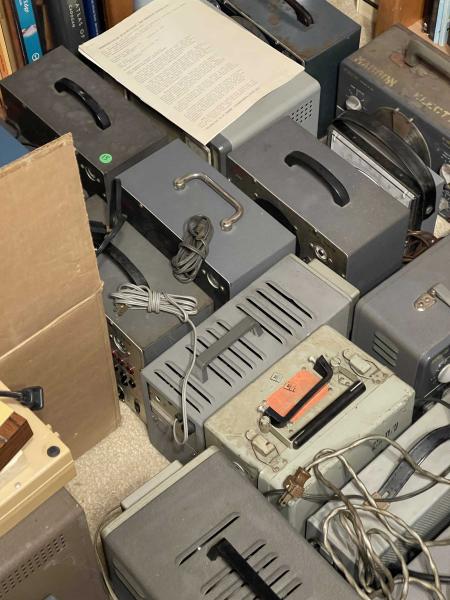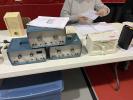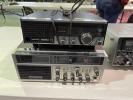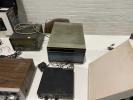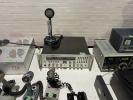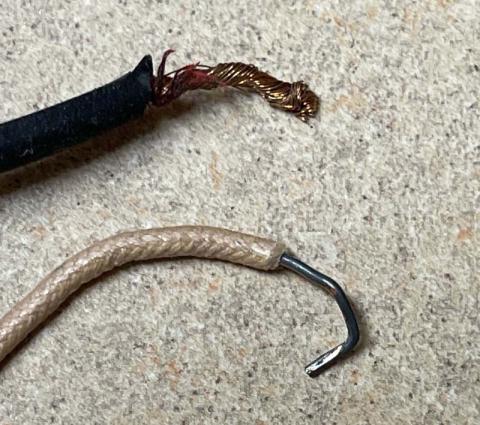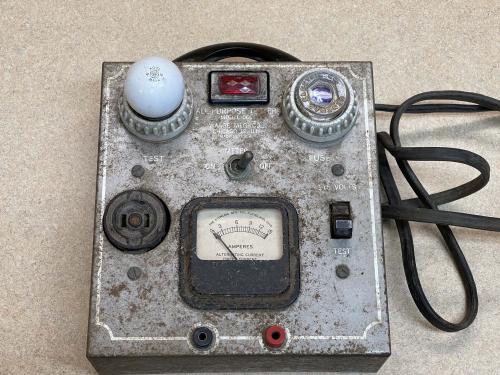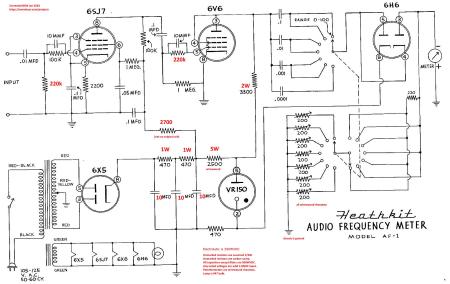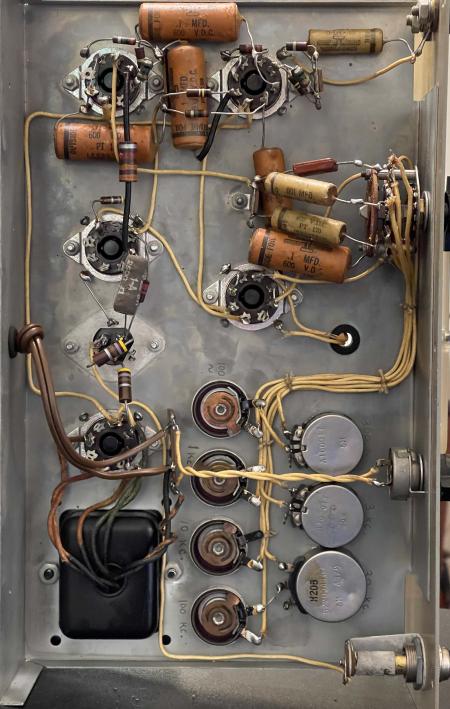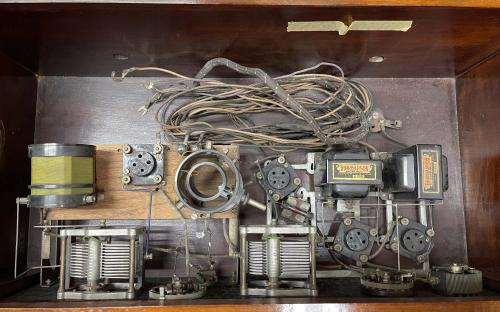- 2025
- Jan
- 22
What do you mean I have a problem?
I don’t have a problem.
Well, maybe I do have a little bit of a problem. But they all work. They’re just waiting…for…something. Yes, that’s it.
- 2025
- Jan
- 20
I’ve done a little maintenance on things here at wereboar.
I had to do a little low-level maintenance on things, and that involves doing some regeneration on stuff deep inside the system.
Everything should be back to normal save I’ve removed the last posts sidebar item. The main page shows 10 posts, so I didn’t see a need to re-show those same 10 posts in a widget. That probably saves you 0.01s per reload…
Regardless, if you see something broken, please let me know on LinkedIn or Mastodon.
- 2025
- Jan
- 20
The SCARF 2025 hamfest in Shade, Ohio.
This is my second year going to this show. It’s a small show, and was a bit smaller than last year - probably due to the fact that it was snowing like crazy when we left, and that probably kept some people away. Regardless, it still had that nice cozy feeling to it, and there was plenty to see for a small show. I picked up a set of Heathkit test equipment, mostly for one of the pieces (but the whole set was cheap!) and my fellow show-goer picked up a nice Dell i7 4th micro machine for his home entertainment center.
Here’s what I saw that was interesting at the show:
.
Not a lot of pictures because of the size of the show. This year’s theme seems to be starting out with AM CB stuff again, much like last year - it’s literally everywhere, everything from big base stations to modern car portables. That’s probably going to be like PC compatible stuff and videotape was some years ago - things changed, and people are cleaning out until it’s gone.
There’s a couple of shows in February and March, but the next one I’ll probably hit is the Cuyahoga Falls show in April. That gives me some time to go through the things I have. It’s “fix and keep” or “get rid of” time, and having a couple of months with no new stuff coming in will help.
See you at the hamfest!
- 2025
- Jan
- 18
I guess the wire was supposed to be the fuse?
Here’s some wire from the appliance test box I posted about a few days ago. One piece is the line cord, the other some of the internal wiring.
I should mention that this box was rated for 15 amps AC.
The black one is the power cord. It’s nice, heavy, stranded red copper. The closth-covered one? Nah, bro. That’s 18GA and is rated for 14A. Other wire in the box was 18GA PVC coated, and certainly would have started smelling a little funny had you ran this device at max capacity - indeed, that metal toggle on the front had a terminal where the solder had melted away and it was just hanging on by a thread. Something in there had been hot for a long time.
I had made a joke about self-fused wire and a portable house fire in waiting on LinkedIn, but it didn’t go over well. People were getting very upset over it and I decided that was something not appropriate for the audience there. I guess my sense of humor is just strange.
Regardless, this thing wasn’t anywhere near rated for it’s nameplate capacity. I’m really surprised there wasn’t more heat damage evidence on the various connections. All of that old stuff has been removed and discarded, the only thing that will be in use is one of the ceramic sockets and a new meter that I’ll install before use.
The post about the device itself: https://wereboar.com … -waage-066-test-box/
- 2025
- Jan
- 17
What to do with this thing? The Waage 066 test box…
Some time ago I posted about this device that I picked up at the Butler Hamfest. It’s a dim-bulb tester designed for appliance service - Waage made (and still makes) resistive heating element devices, so something like this would be right in line with their products - assuming you didn’t burn the small gauge wire inside the thing up!
(Dim bulb testing means having a lightbulb in series with the device you’re working on - if the device is shorted, the lamp will absorb the voltage, preventing damage to your device, It’s a common tactic in working with old radio and television devices where you could destroy an unobtainable part if something is shorted.)
Since it’s not really of much use to anyone as-is, I think I’m going to try and repurpose this into some sort of display piece. I’ll try and find a voltmeter that will fit the hole, fix the pilot lamp, and place a low-wattage bulb in the one socket. Make it into an accent lamp of sorts.
I think that’s probably the best use for this, as I hate to see it scrapped. Stay tuned, hamfests are starting up for the year and I’ll be on the lookout for a meter.
- 2025
- Jan
- 16
The Heatkit AF-1 Analog Frequency Meter, Part 4 - Parts.
After going through and correcting the schematic, I now have a list of parts to order. The only one I don’t need is the 2.5K resistor that feeds the plate of the voltage regulator tube - I already have a small supply of 5W qualified parts, and will use one of those instead of buying more.
Other than that, this is my list:
All of these are exact values, except for the 0.05μF - 0.047μF is close enough here, and probably is closer to the original value part due to lower tolerances.
If you’d like to purchase these for yourself, the text of the part numbers:
104MWR630K
103MWR630K
102MPW630K
CDV19CF100JO3F
CD15FD101FO3F
473MWR630K
MFR50SFTE52-220R
MFR50SFTE52-2K2
MFR50SFTE52-220K
MFR50SFTE52-100K
MFS1/2DCT52R1004F
MFR1WSFTF52-2K7
PR02000203301FA100
MBE04140C4700FC100
For most of these items, I’m purchasing at the price break simply because these are common values and I can use them elsewhere. Resistors are probably overkill here at 1%, but they’re cheap - some of the half-watt units are under $2.00 for 100 pieces. A couple of the parts, like the 470Ω resistors, I’m buying multiples of the highest wattage used in the unit, again - for the price break. A 1W part in a 1/2W spot is meaningless with a point-to-point chassis as open as this one.
The only ones I’m keeping to quantities needed are the more expensive items - the 10pF and 100pF mica units are rather expensive, so I get what I need. Your purchases depend on your needs, however.
I’m going to go over the list one more time, then place an order.
Some may think that this isn’t really a good use of money or time due to the fact the device is quite obsolete, but that isn’t the value of the exercise. I like this unit, it’s a cool piece, and it’s going to go on my bench once completed.
Stay tuned for parts!
Next part of this series: https://wereboar.com … -meter-intermission/
Previous part of this series: https://wereboar.com … hematic-corrections/
- 2025
- Jan
- 14
The Heatkit AF-1 Analog Frequency Meter, Part 3 - Schematic Corrections.
I didn’t have (and couldn’t find) a manual online for this device, but ManualMan had a reproduction manual available. This was my first time ordering one of these, and I can highly recommend this service. The manual is a comb-bound booklet with cardstock covers and a large, fold out schematic. If you want something that resembles the original, this is your stop.
You can check them out at https://www.manualman.com/.
I procured that because my unit and the schematic I found online differ, and some things I’ve seen elsewhere suggest that the online version is a pre-production schematic taken from the Heathkit schematics book. The schematic in the manual has resistor wattages, capacitor voltages, and a component that doesn’t exist on the pre-prod version. I’m not going to copy the manual that I purchased (but will copy a version that I find in the wild, if one exists) here, but I’ve made corrections to the schematic that’s online.
My corrections are in red, but the compression on the image may make it difficult to read. Click this for a larger version suitable for 11×17 printing.
Future me note: This is not the final schematic. You can find that in the wrapup post, or at this link.
Next is to make some decisions about parts. I’ll probably keep capacitors at their specified voltage (or higher) even though nothing more than 400V should be present. Resistors will keep their wattages, or in the case where multiple wattages of the same resistance exist, I’ll just use the higher wattage for everything so as to buy components in bulk.
Stay tuned for the parts list in part 4.
Next part of this series: https://wereboar.com … -meter-part-4-parts/
Previous part of this series: https://wereboar.com … eter-part-2-testing/
- 2025
- Jan
- 9
An Unknown 2-dial TRF radio part 2: Identifying things inside.
Back in November, I made a post about a homebrew coffin TRF radio that I picked up for a song at the Scott Antique Market in Columbus. I’ve been digging into this unit some and have identified it as a single RF amp stage TRF.
This helps solve the location of the tubes, from left to right:
UX201A RF Amp
UX200A Gaseous Detector
UX201A Audio Amp
UX201A Audio Amp
I’ll need 90V for the plates of the UX201A, and 22.5 for the plate of the UX200A detector - these apparently can’t be run much past 30V, otherwise they act like a neon lamp and ionize. I’ll also need something for the filaments - the UX2xx all run on 5V, but all the original operator would have had was a 6V dry cell and a rheostat. 5V is really easy for us to get these days, so I’ll probably just yank a linear supply from something and set that up. The other two supplies may require some doing, but I can do this easily enough with linear regulators as well, just lift them above ground.
So…next step is to actually sit down and identify the battery wires based on where they go, which should be easy enough now that I know what they should be connected to!
Next part of this series: https://wereboar.com … s-inside-identified/
Previous part of this series: https://wereboar.com … wn-2-dial-trf-radio/
- 2025
- Jan
- 7
Federated but disassociated social networking via nostr.
There are some federated, but disassociated services out there if you’re technically inclined to use them.
Federated means that there’s a multitude of sites all speaking the same protocol, but none of them are under a central banner (i.e. reddit, twitter, etc.) Disassociated means that it goes one step further and breaks you off into a mini-site. Why? This removes the ability of a mod of a site being able to chose who can follow users of their site, or who the site’s users can follow. Censorship resistant to a degree.
I’ve joined one such system called nostr, via a web client called Satellite Earth. It’s relatively easy to join, you get a private/public keypair to remember and that’s it.
I’ve created a community called oldtech:
https://satellite.ea … 0s9sn9xgulwfqsy6uf4w
and you’re free to join and post your old tech goodies. See you there!
- 2025
- Jan
- 3
The Sunday Creek Amateur Radio Federation Hamfest - January 19th
The first show of the season is a small hamfest in Shade, Ohio - a little town about 90 minutes south of Columbus. Last year was the first time I attended this one, and I was pleasantly surprised. It wasn’t big, but had a couple dozen vendors, with a nice, warm “get out of the cold and get cozy” feeling to the place. It attracted quite a few people, and I walked out with a few decent deals. I’m looking forward to this one.
There is a chance of snow throughout the day, so take your time if you go.
See you there!
Sunday Creek Amateur Radio Federation Hamfest
Shade Community Center
2380 Old U.S. 33
Shade, OH 45776
January 19
8A-2P
Admission $6
http://www.arrl.org/hamfests/sunday-creek-amateur-radio-federation-hamfest-4
